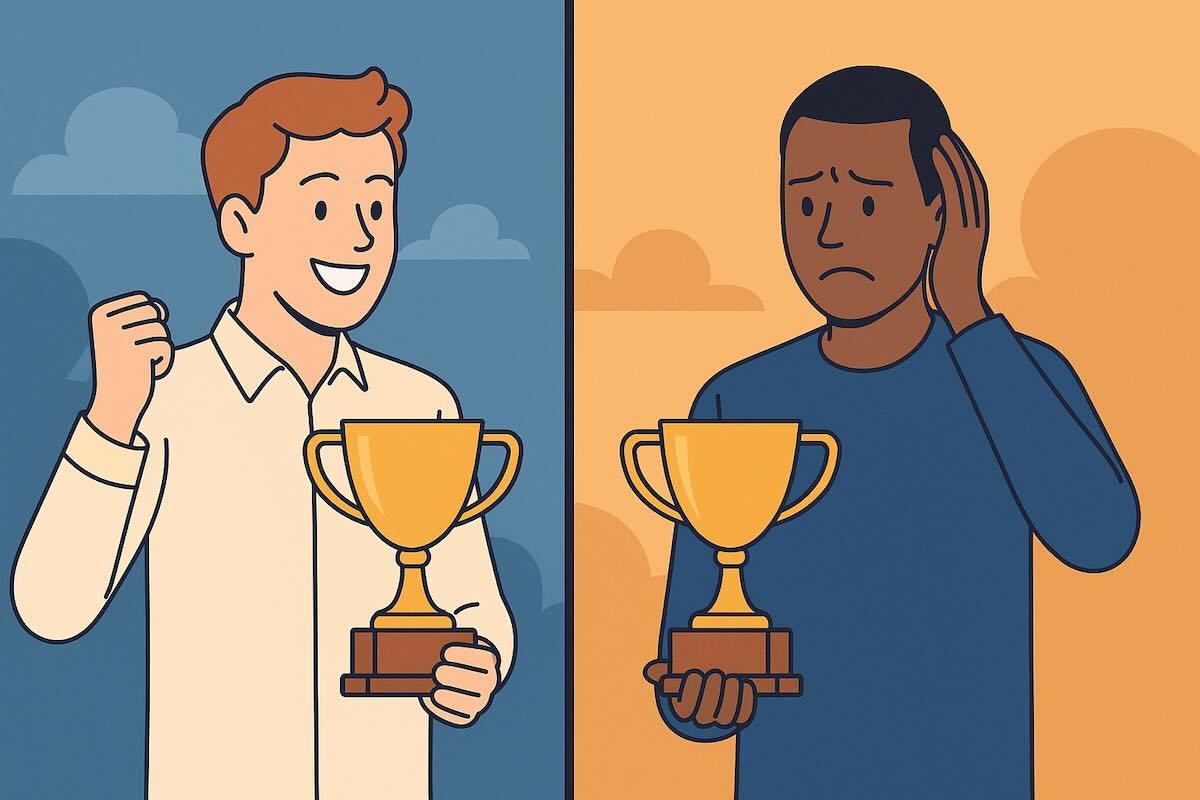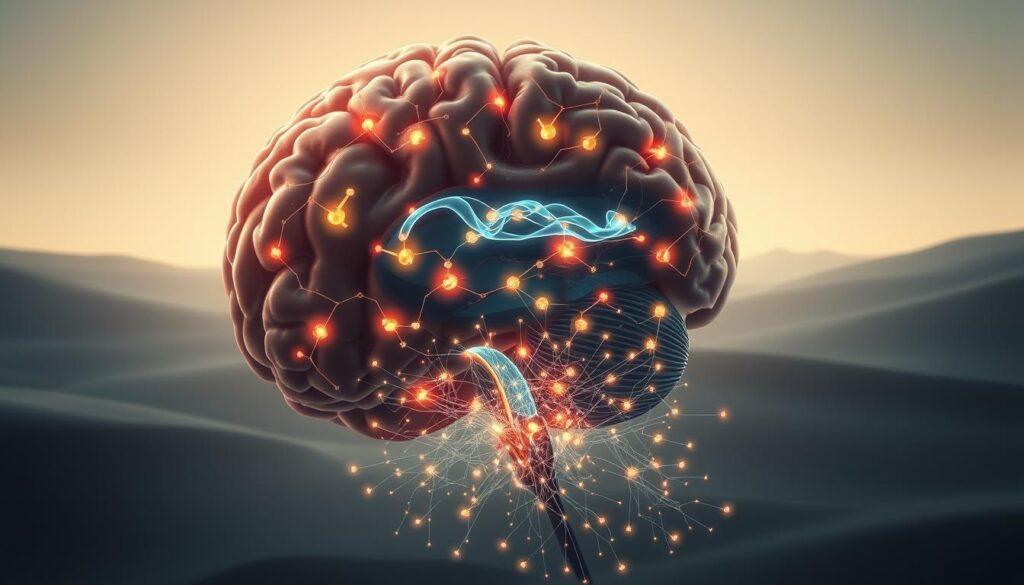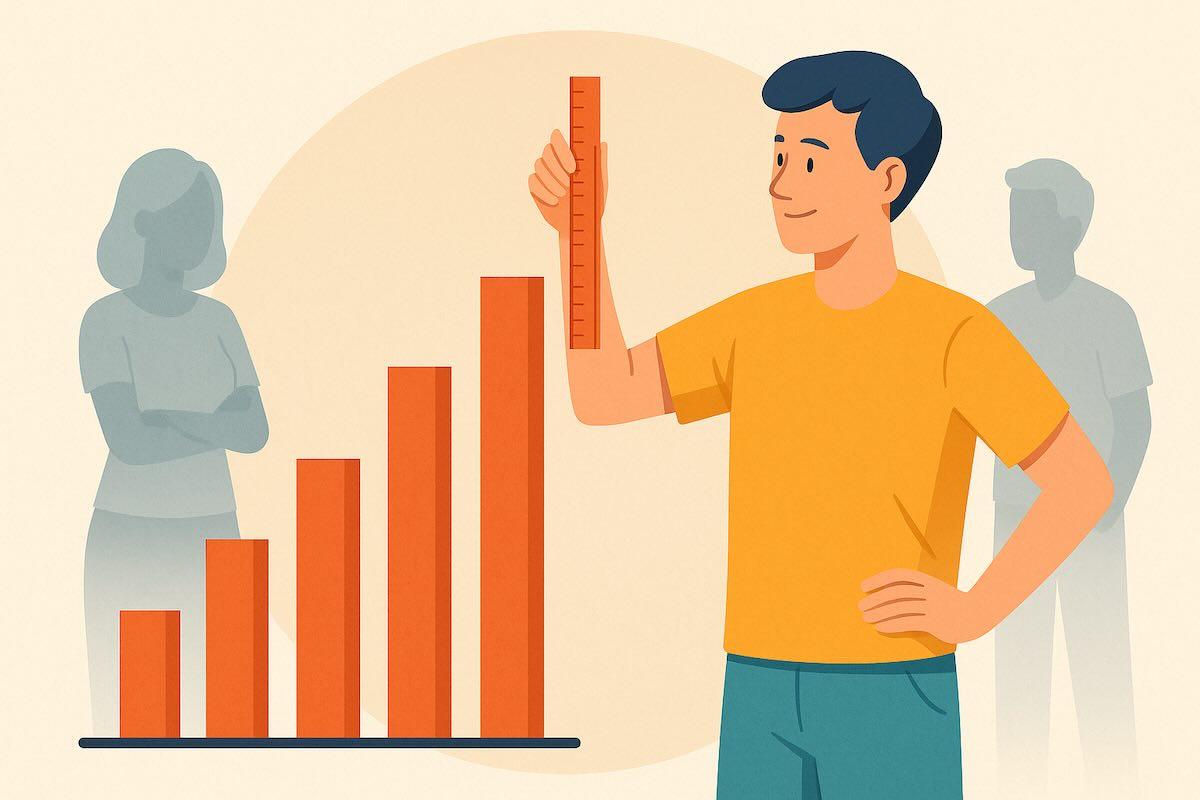The Relative Satisfaction Mental Model shows how our happiness often depends on comparing ourselves to others. Instead of just asking if something is good, we compare it to what others have or what we expected.
This idea is seen in many fields, like economics, psychology, and decision-making.
It affects our job satisfaction, how we buy things, and our motivation and regret over time. This model is linked to ideas like hedonic adaptation, reference dependence, and status anxiety.
Understanding it helps us see why people might feel unhappy even when they’ve achieved a lot.
It also shows how comparing ourselves can either hurt or help our happiness. Whether you’re a manager, investor, or someone studying how we make decisions, knowing about relative satisfaction can help you make better choices for the future.
Key Takeaways
- Relative satisfaction mental model hinges on comparisons, not objective success.
- Loss aversion makes losses twice as impactful as gains.
- Over 90% of Canadians report high life satisfaction, yet regional gaps highlight comparison effects.
- 80–90 mental models like this one drive 90% of smart decisions.
- Opportunity costs and trade-offs matter as much as income or age.
How the Relative Satisfaction Mental Model Works

This model is based on the idea that happiness is not just about what we get. It’s also about how it compares to what others have. For instance, someone might feel great about a $10,000 raise. But then, if they find out a friend got $15,000, they might start to feel less happy.
This effect is made stronger by:
- Reference Dependence (Prospect Theory): We judge things based on what we already have, not just what we get.
- Social Comparison Theory (Festinger): We measure our success by how we stack up against others, like friends or rivals.
- Hedonic Adaptation: We get used to good things fast. So, we always need something better to keep feeling good.
Understanding these ways we think can help us set better goals. It also makes it easier to make choices without getting too tired.
Understanding the Relative Satisfaction Mental Model
Learning how your brain makes you feel satisfied starts with the satisfaction framework. This model shows how comparing things makes us feel good. It explains how our past and what others do shape our views.
The Psychology Behind Comparative Satisfaction
Your brain uses psychological models of satisfaction to make decisions easier. Studies show our brains focus more on comparing ourselves to others than on facts. For instance, a study by Cannon-Bowers et al. (1990) found teams with the same mindset did 25% better.
This shows how our quick thinking affects our daily choices.
How Relative Satisfaction Differs from Absolute Satisfaction
Looking into mental models, we see that chasing absolute goals doesn’t always make us happy. Think about getting a promotion but feeling left out because a friend got a bigger raise. This shows how relative satisfaction works: happiness comes from how we compare, not just achieving something.
Psychological studies back this up. Shane Parrish’s work shows happiness comes from how we do better than before, not just achieving more.
Historical Development of Satisfaction Frameworks
For thousands of years, philosophers and psychologists have argued about what makes us happy. Junto Investments’ mental model analysis shows this long journey. It contrasts ancient stoicism’s focus on gratitude with today’s data-based views.
Over time, mental models have mixed intuition with facts. This has led to the relative satisfaction framework we use today.
How Your Brain Processes Relative Satisfaction
Your brain loves to compare. The cognitive psychology of satisfaction shows it focuses on being better than others. Seeing a coworker get promoted makes your brain light up, not because you’re jealous. It’s because your brain sees success in how you compare to others.
“Social comparisons shape satisfaction through brain mechanisms like the ventral striatum and dorsal anterior cingulate cortex, which activate during relative evaluations.” – Klaus Fliessbach

These mental schemas of satisfaction start early. Wanting a bonus after a peer gets one changes your brain’s idea of fairness. It’s not just feeling good—it’s a way to survive. Our brains are wired to seek status, just like our ancestors did.
Think about this: 80% of people say they’re happy, but many feel left out when they compare to others. Research shows dopamine releases when we do better than others. It shows happiness comes from feeling ahead, not just having things.
Ever felt down after scrolling through social media? It’s your cognitive psychology of satisfaction at play. Your brain is constantly updating your happiness based on comparisons. Knowing this is the first step to changing how you feel.
Practical Applications of the Relative Satisfaction Framework in Daily Life
Learning about the relative well-being model and relative satisfaction perception is more than just book knowledge. It’s a way to make better choices every day. We can use it to enhance our relationships, careers, finances, and mental well-being.
“Comparison is the thief of joy.” – Theodore Roosevelt
Work & Compensation
Two employees get the same bonus. One is thrilled. The other is upset because a coworker got a bit more. It’s not about the bonus itself, but how fair it seems.
Consumer Behavior
Someone buys a product for $80, then sees it for $60 the next day. They feel cheated, even though they got a good deal. It’s not about the value, but the feeling of missing out.
Investing & Regret
An investor makes a 12% return, but sees others earn 20%. They focus on what they missed, not what they gained. This can lead to dissatisfaction or taking bigger risks.
These examples show how easily comparison can affect our happiness and decisions. Even when things are good, we can’t help but compare.
How Relative Satisfaction Undermines Goal Setting
When we judge our goals by how we compare to others, they keep changing. Achieving personal goals doesn’t feel as good if someone else does better. This leads to:
- Goal erosion: We lose excitement for our achievements once they’re done.
- Performance anxiety: We feel pressured to beat others instead of focusing on getting better ourselves.
- Sabotaged consistency: Always changing goals makes it hard to stay focused for the long term.
Knowing this trap helps us switch to internal benchmarks. This is a much more stable way to find happiness.
Common Misconceptions About Relative Satisfaction Theory
Many people think relative satisfaction theory is just about feeling jealous when others succeed. But, this idea doesn’t fully capture how our brains work. Let’s debunk these myths and understand how comparisons really affect our choices.
| Misconception | Reality |
|---|---|
| It’s just about greed or envy. | A natural cognitive process influencing every choice, not just material desires. |
| Knowing the theory stops its effects. | Like learning math, it requires practice. Awareness alone won’t change ingrained habits. |
| Comparisons are always harmful. | Used wisely, they can drive growth. The key is how you frame them. |
“Happiness hinges on where you stand compared to others or your past.” — Farnam Street Mental Model Guide

Studies reveal that most people miss the point of relative satisfaction theory. For instance, comparing salaries can spark ambition, not just jealousy. Misunderstanding this can hold you back.
By using mental model analysis, you can see when comparisons help or hinder you. It’s time to move past seeing this theory as only negative and start using it to guide your focus.
Strategies to Counteract the Relative Satisfaction Trap

Here are three practical strategies to break the cycle:
- Anchor Goals Internally
Set progress markers based on your own past performance, not others. This reduces dependency on external validation. - Use Gratitude Practices
Psychological studies show gratitude reduces the emotional intensity of upward comparisons, shifting focus back to sufficiency. - Precommit Your Metrics
Before starting a goal, define what “success” means for you. Stick to those metrics—even when exposed to others’ results.
Conclusion
The Relative Satisfaction Mental Model helps us understand value, success, and progress. It shows our feelings are not just about what we get. They also depend on how it compares to others or our expectations.
This can lead to bad decisions, lost motivation, and regret, even when things are good. It’s because we focus too much on how we stack up against others.
By seeing how relative comparison affects us, we can think and act better. This is true whether you’re leading a team, setting personal goals, or planning for the future.
Focusing on what truly matters to you, not just what others think, leads to better results and true happiness.


